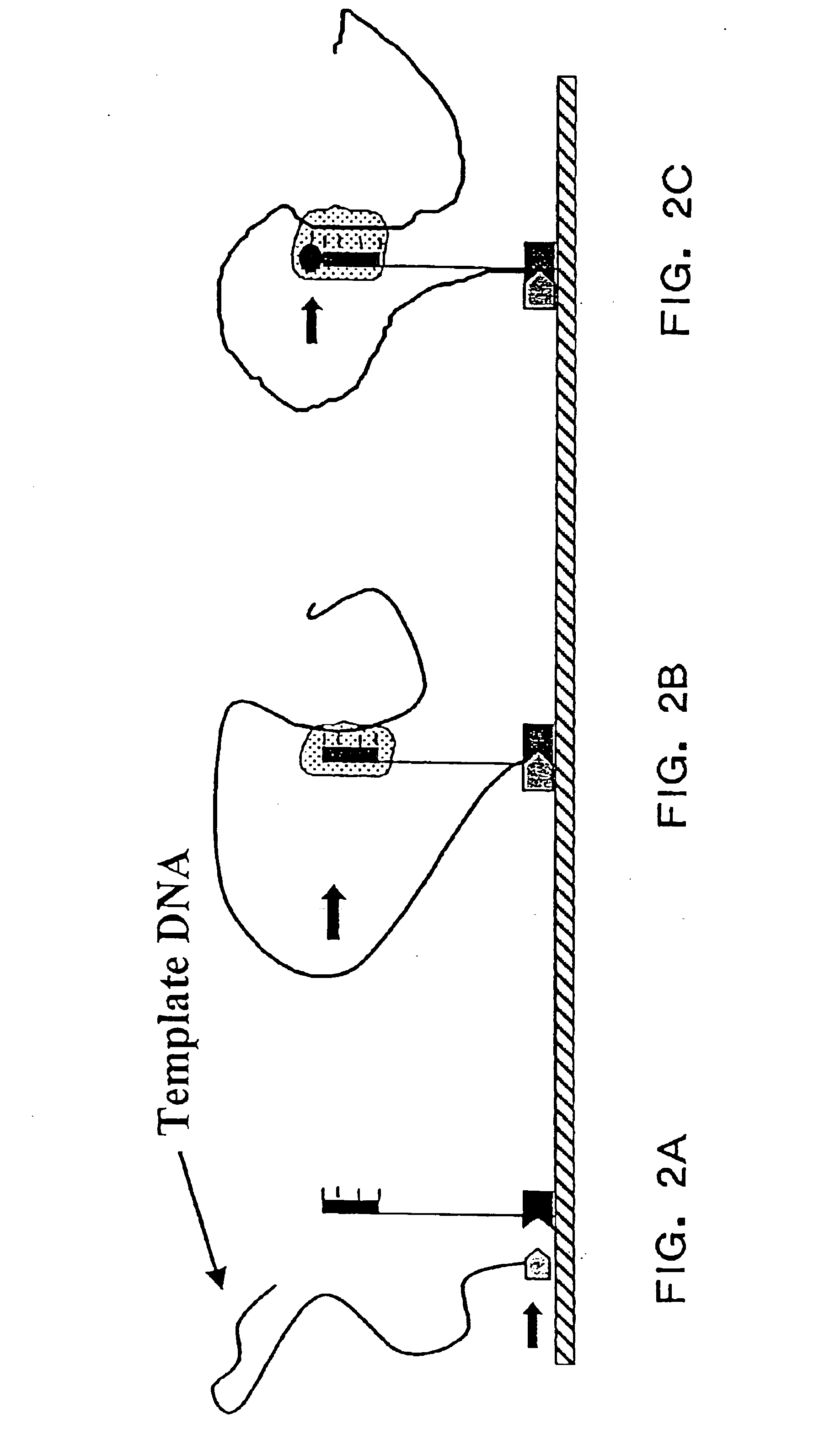Polymerase signaling assay
a polymerase and signaling technology, applied in biochemical apparatus and processes, specific use of bioreactors/fermenters, biomass after-treatment, etc., can solve the problems of complex arrays, laborious and time-consuming steps, and inability to use extensive sequencing methods, so as to reduce the need for complex and intensive methods of analysis, the effect of simple and straightforward production
- Summary
- Abstract
- Description
- Claims
- Application Information
AI Technical Summary
Benefits of technology
Problems solved by technology
Method used
Image
Examples
example 1
6.1. Example 1
Use of PSA to Identify Single Base Substitutions in a Synthetic Template
This example analyzes two synthetic DNA templates that vary by a single base using the Polymerase Signaling Assay (PSA) method of the present invention on a solid-phase sequence array. The results of this example demonstrate that the PSA methods of the present invention produce different patterns of signals for the two different template sequences as predicted.
6.1.1. Materials and Methods
DNA oligonucleotide sequences which are complementary to the "wild type" and "mutant" sequences listed in Table I were synthesized using standard techniques of phosphoramidite chemistry (see, e.g., Matteucci, M. D. et al., supra) as templates for PSA analysis. The oligonucleotides were synthesized to further contain a 5'-(C).sub.18 (SEQ ID NO.4) tail to provide a capture region for attachment of the template to the sequence reagents.
Primer Synthesis:
The 21 primer sequences shown in Table II were ...
example 2
6.2. Example 2
Use of PSA to Identify Mutations and Polymorphisms in a P53 Gene
This example analyzes the 103 base pair sequence of p53 exon 8 using the PSA methods of the present invention on a solid-phase sequence array. The results of this example demonstrate that the PSA methods of the invention can identify several varieties of genetic mutations and / or polymorphisms of an actual gene, including single nucleotide polymorphisms, base deletions, base insertions, and heterozygote polymorphisms.
The purpose of this experiment was to determine the potential applicability of the PSA methods of the invention for analyzing template nucleic acid molecules corresponding to actual genetic sequences. To this end, the PSA methods were used to analyze wild type and mutant sequences of the 106 base exon 8 of the p53 gene (SEQ ID NO.1 & SEQ ID NO.2).
Accordingly, using a computer model, expected binary data was generated for PSA analysis of every possible point mutation of the p53 exon 8 nucleic ac...
PUM
| Property | Measurement | Unit |
|---|---|---|
| Length | aaaaa | aaaaa |
| Mass | aaaaa | aaaaa |
| Density | aaaaa | aaaaa |
Abstract
Description
Claims
Application Information
 Login to View More
Login to View More - R&D
- Intellectual Property
- Life Sciences
- Materials
- Tech Scout
- Unparalleled Data Quality
- Higher Quality Content
- 60% Fewer Hallucinations
Browse by: Latest US Patents, China's latest patents, Technical Efficacy Thesaurus, Application Domain, Technology Topic, Popular Technical Reports.
© 2025 PatSnap. All rights reserved.Legal|Privacy policy|Modern Slavery Act Transparency Statement|Sitemap|About US| Contact US: help@patsnap.com



